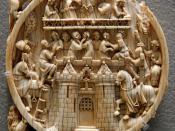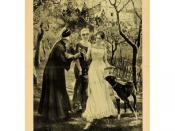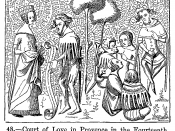Virtue & Desire
What exactly is ideal love? This is a question that works of literature have been discussing for thousands of years. The lines between true virtuous love and those types of love involving primarily lust have been exemplified in historic texts repeatedly. In discussing virtuous love and how it contrasts with that of mere desire the term courtly love must be recognized. Castiglione describes courtly love as noble and holy within the dialogue of his "The Courtier". The Courtier's love is an unrealistic love that all are to strive for. This form of love is seemingly unreal due to the fact that human nature in most respects inclines men and women alike to see only the surface value of a beings beauty, therefore rendering most incapable of a truly ideal love.
I intend to carry this idea even further in discussing the parallels among Castiglione and Sidney's discussion about ideal love within there works "The Courtier" and "Astrophel and Stella. The poem by Sydney eloquently states the core beliefs dealing with the everlasting conflict between virtue and desire found in Castiglione book one of "The Courtier.
M. Peter the character found within the dialogue of "The Courtier" attempts to use language to describe what love really is. His first words on the subject are full of sureness; "love is nothing else but a certain coveting to enjoy beauty...to every virtue of knowledge there is annexed a virtue of longing." (page 118) In this Castiglione makes clear that men are naturally predisposed to be lustful and overlook all of the true virtues that love entails. Sonnet 52 of "Astrophel and Stella" Sydney is confirming the idea that love in itself is not of moral standing and in turn...


